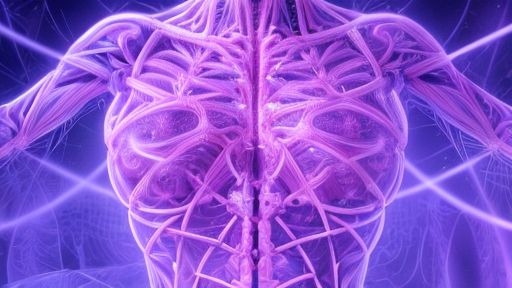Unraveling the Mystery of Myofascia Structure: A Deep Dive
Unraveling the Mystery of Myofascia Structure: A Deep Dive
Welcome to the fascinating world of myofascia! If you’ve ever experienced muscle pain, discomfort, or tightness, chances are it’s related to your myofascial structure. But what exactly is myofascia, and how does it affect our bodies? In this article, we’ll take a deep dive into the intricacies of myofascial structure and unravel the mysteries surrounding it.
What is Myofascia?
Myofascia refers to the interconnected network of fascia and muscles in our bodies. Fascia is a thin, tough, and flexible connective tissue that surrounds and supports our muscles, bones, organs, and other structures. It acts as a protective and supportive sheath, helping to maintain the shape and integrity of our bodies.
Imagine fascia as a web that envelops every cell in our body, from head to toe. It provides structural support, allows for movement, and plays a crucial role in our overall health and well-being. Myofascia is not a separate entity from our muscles; rather, it is an integral part of our musculoskeletal system.
Understanding Myofascial Structure
The myofascial structure is a complex and intricate network of fascia that runs throughout our bodies. It consists of three main layers: the superficial fascia, deep fascia, and visceral fascia.
Superficial Fascia
The superficial fascia is the layer of fascia that lies just below our skin. It contains fat cells, blood vessels, nerves, and lymphatic vessels. This layer serves as an insulating layer, providing cushioning and protection to the underlying structures. It also plays a role in regulating body temperature and storing energy.
Deep Fascia
Deeper within our bodies lies the deep fascia, which surrounds and supports our muscles. This layer of fascia is denser and stronger than the superficial fascia and forms a continuous network that envelops individual muscles, muscle groups, and even entire limbs. It provides structural support, helps muscles glide smoothly over one another during movement, and distributes forces generated during muscle contractions.
Visceral Fascia
The visceral fascia, also known as the organ fascia, is the layer of fascia that surrounds our organs, such as the heart, lungs, liver, and intestines. It provides support, stability, and protection to our organs, allowing them to function optimally.
Functions of Myofascia
Myofascia serves several crucial functions in our bodies. Let’s take a closer look at some of them:
Movement and Flexibility
Myofascia plays a significant role in our ability to move and be flexible. It acts as a lubricating layer, allowing our muscles to glide smoothly over one another during movement. It also helps to transmit forces generated by muscle contractions, allowing for efficient and coordinated movement.
Structural Support
The myofascial structure provides structural support to our entire body. It helps to maintain the shape and integrity of our muscles, organs, and other structures. It also helps to distribute forces evenly across our body during movement, reducing the risk of injury and promoting overall stability.
Injury Prevention
Healthy myofascia is essential for injury prevention. When our fascia is flexible, hydrated, and well-maintained, it can absorb and distribute forces generated during physical activities, reducing the risk of strain, sprain, and other injuries.
Pain and Discomfort Relief
Myofascial restrictions or adhesions can result in pain, discomfort, and restricted movement. Techniques such as myofascial release and trigger point therapy can help to release these restrictions, alleviate pain, and restore normal
functioning of the myofascia. These techniques involve applying gentle pressure, stretching, and manipulation to the fascia, helping to release tension, improve circulation, and promote healing.
Body Awareness and Mind-Body Connection
Myofascia is closely connected to our nervous system and plays a role in our body awareness and mind-body connection. Fascial restrictions can result from physical trauma, stress, or emotional tension, and can manifest as physical discomfort or pain. By releasing these restrictions, we can improve our body awareness, enhance our mind-body connection, and promote overall well-being.
Conclusion
In conclusion, myofascia is a fascinating and intricate network of fascia and muscles that plays a crucial role in our body’s structure, movement, and overall health. Understanding the different layers of myofascial structure, its functions, and the techniques used to release fascial restrictions can help us maintain a healthy, functional, and pain-free musculoskeletal system. If you’re experiencing muscle pain or discomfort, consider consulting a qualified healthcare professional who can provide guidance and treatment options tailored to your specific needs. Take care of your myofascia, and it will take care of you!
You may like this video!
